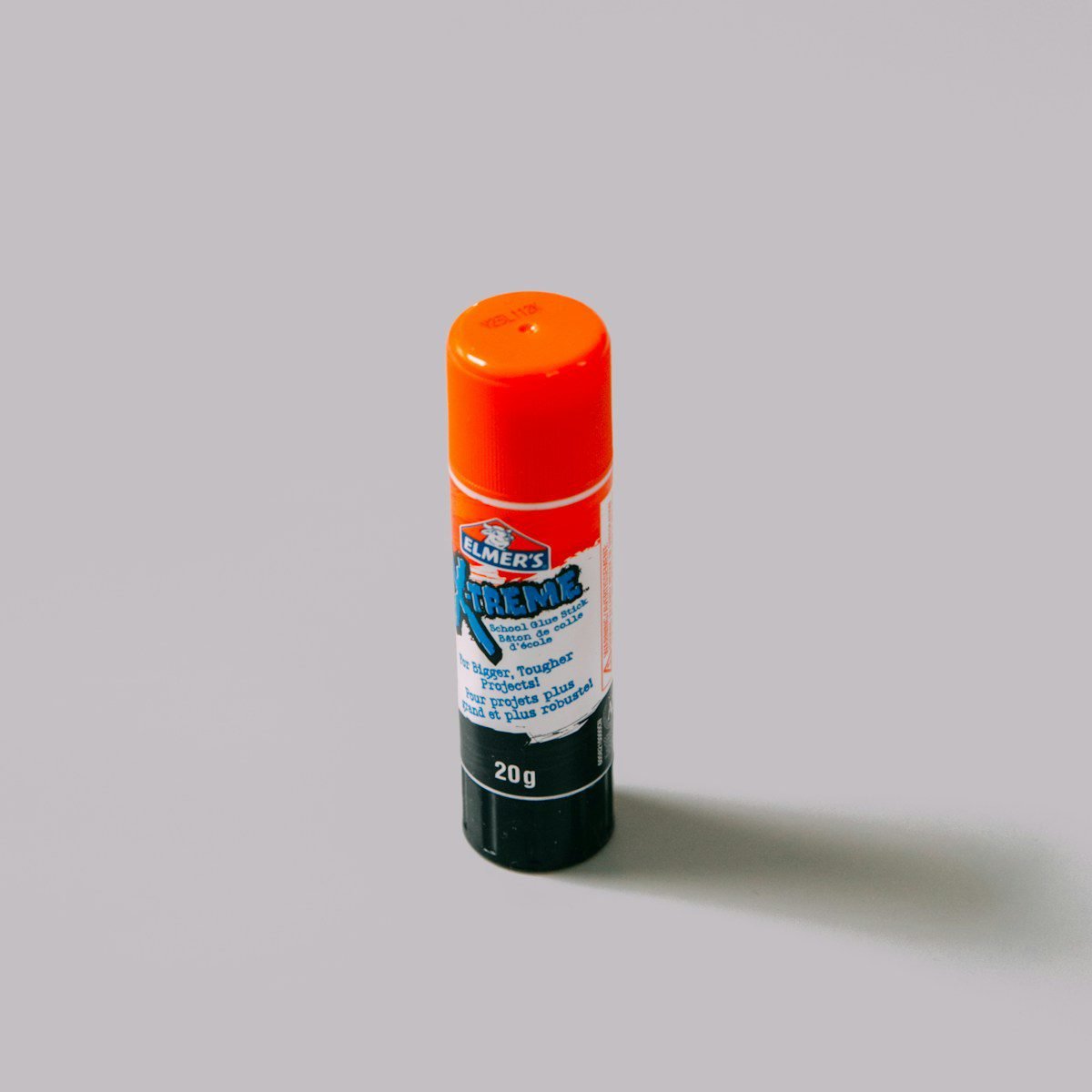Are you curious if tacky glue is a trustworthy adhesive for fabric bonding? Are you wondering how durable this adhesion will be with everyday use, or should tacky glue only be used in short-term projects? Rest assured. In this post, we’ll explore the efficiency of tacky glue work on fabric and how it can be correctly applied. Uncover why its popularity persists when bonded with any type of material – from clothing and upholstery to canvas and velvet.
What exactly is tacky glue?
When it comes to DIY projects or crafting, look no further than Tacky glue. This water-based adhesive is easy to apply and provides a transparent finish with an ultra-strong binding power – perfect for affixing paper, wood, and other porous materials. It’s also commonly known as white glue, PVA (polyvinyl acetate), or school glue. Perfect for kids’ crafts, Tacky glue offers a safe and simple solution to adhering materials together. Remember that this type of adhesive should never be used on fabrics that need regular washes because its strength will slowly diminish after continuous contact with water.
Does tacky glue work on fabric?
Tacky glue suits delicate fabrics, including lace, burlap, and felt. However, it is not recommended for heavier materials such as denim or canvas that will be washed regularly or subjected to heavy use. Although tacky glue may adhere temporarily on these harder-to-stick surfaces, the bond can quickly break when exposed to frequent washing or tough conditions.
Apply a thin layer of tacky glue on the fabric for optimal adhesion and press firmly. Don’t forget to let the glue cure completely before using it – otherwise, your project’s success is compromised.
When it comes to materials that will be washed regularly, tacky glue can quickly become a bad adhesive. Instead, fabric glues such as fabric glue or fabric fusion are ideal alternatives because they have been designed specifically for fabrics and retain their strength even after multiple washes.
How Tacky Glue Works on Fabric:
Types of Fabric Suitable for Tacky Glue:
Tacky glue can be used on various substrates, yet it’s not suitable for all fabrics. It is ideal for lightweight and non-washable materials like lace, burlap, or felt. However, heavy textiles like denim or canvas may not respond well to tacky glue treatment due to frequent washing cycles and potential wear and tear over time.
Fabrics to Avoid:
If you’re looking to apply tacky glue on fabric, the material must be avoided if heavy washing or wear and tear are anticipated. In this case, opting for fabric-specific glues like fabric fusion will guarantee a stronger bond in the long run. Use the proper technique for best results when using tacky glue on fabrics.
Technique for Applying Tacky Glue on Fabric:
Preparing the Fabric:
- Begin by preparing the fabric by cleaning it of any dirt, dust, or debris.
- Lay the fabric flat on a clean and smooth surface, such as a table or cutting board.
- If you are using multiple pieces of fabric, align them as desired before applying the glue.
Applying the Tacky Glue:
- Using a brush or small tool, apply a thin and even layer of tacky glue to one side of the fabric.
- Be sure to apply the glue sparingly, as too much glue can make the fabric stiff and hard to work with.
- Carefully press the two pieces of fabric together, removing any air bubbles and ensuring that the fabric is properly aligned.
- Apply pressure to the fabric with your hands or a roller to ensure a good bond.
- If you are using multiple pieces of fabric, repeat steps 1 through 4 until all of the fabric pieces are joined together.
Drying the Fabric:
- Allow the glue to dry completely before using the fabric.
- It’s a good idea to lay the fabric flat and weigh it down, if necessary, to keep it from moving while the glue dries.
- The drying time will vary depending on the humidity and temperature of your workspace, but it typically takes 24 hours for the glue to dry completely.
Advantages and Disadvantages of Using Tacky Glue on Fabric:
Advantages of using tacky glue on fabric:
- Tacky glue is a versatile adhesive used on various fabrics, including lightweight and non-washable fabrics like lace, burlap, or felt.
- It dries clear, making it ideal for projects where the glue will be visible.
- Tacky glue is non-toxic and easy to clean up with water, making it a safe option for children’s crafts.
- Tacky glue is inexpensive, making it a cost-effective option for craft projects and DIY repairs.
- Tacky glue can be used in various crafting projects, from making homemade cards to creating fabric decorations.
Disadvantages of using tacky glue on fabric:
- Tacky glue may not be as effective on heavier fabrics like denim, canvas, or fabrics that are subject to frequent washing or other wear and tear.
- Tacky glue may lose its strength over time, especially when used on fabrics that will be washed frequently.
- Tacky glue can make the fabric stiff if too much is used, making it difficult to work with.
- Tacky glue has a strong smell that can be overwhelming, especially if used in a small space.
- Tacky glue is not heat resistant, so it may not be suitable for projects exposed to high temperatures.
Alternatives to Tacky Glue for Fabric:
Other types of adhesives that can be used on fabric:
Fabric glue:
This type of glue is specifically formulated for fabric use and is designed to withstand frequent washing. It is available in both liquid and spray forms and dries clear.
Fabric fusion:
This adhesive is also specifically formulated for fabric use. It is a no-sew option that bonds fabrics together with the heat of an iron. It can be used on various fabrics and is machine washable.
Hot glue:
This type of adhesive is popular for fabric projects because it dries quickly and forms a strong bond. It is available in both low and high-temperature formulas and can be used with various fabrics.
Sewing:
For a permanent bond between fabrics, sewing is the best option. It creates a strong bond and allows the fabric to maintain its flexibility.
Can tacky glue be used on all types of fabric?
When it comes to adhering fabrics together, tacky glue is a great go-to option for lighter materials like lace, burlap, or felt. However, if you’re looking for a more resilient hold that can withstand frequent washing and wear and tear of heavier fabrics such as denim or canvas, this might not be the most effective adhesive choice.
How long does tacky glue take to dry on fabric?
The amount of time needed for tacky glue to dry on fabric depends upon the humidity and room temperature, but generally, it will require a full 24 hours to be completely set.
Is the tacky glue machine washable?
Tacky glue should not be put in a washing machine as it may weaken the bond and deteriorate over time, especially when used on regularly laundered items.
Is it OK to put tacky glue on materials that will be stretched or pulled?
If you plan on pulling or stretching the fabric, turn away from tacky glue. It may be sufficient for short-term use, but its strength will quickly dissipate. Fabric glue and fabric fusion are excellent alternatives engineered to effectively bond textiles together with maximum durability.
Can tacky glue be used to hem pants or skirts?
Tacky glue is ideal for lightweight materials such as lace, burlap, or felt that don’t require frequent washing. However, this adhesive may not perform optimally in terms of longevity and durability when it comes to heavier fabrics like denim or canvas. Therefore if you need to hem pants or skirts made from these materials – it’s probably best to opt for more resilient alternatives.
Tacky glue can effectively secure lightweight fabrics such as lace, burlap, or felt. However, for heavier materials like denim and canvas or textiles that will undergo frequent washing or even intense wear-and-tear activities, it may not suffice. For these situations, fabric glues and adhesives designed specifically for fabrics are recommended, namely Fabric Glue and Fabric Fusion. It is essential to spread a thin, even layer of adhesive when working with fabrics and let the glue dry entirely before using it. Also, remember that if you are attaching fabric that will be washed often, the tacky glue might not last as long.

